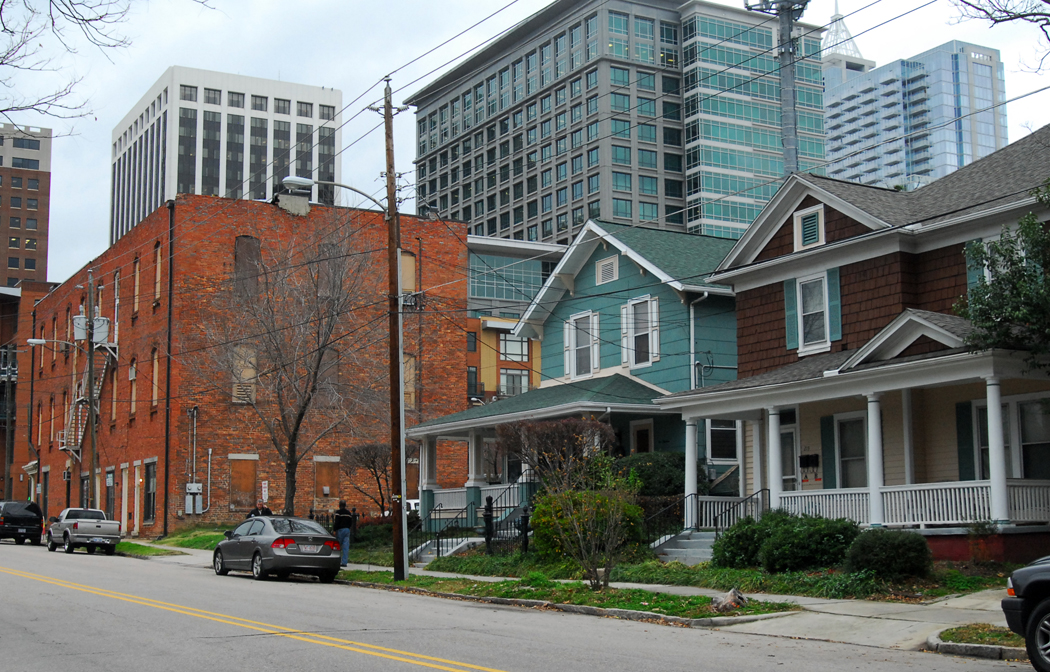This is the first part of a two-part series.
A possible Historic Overlay District for an area of Southeast Raleigh is on hold for another month after city councilors requested that the Raleigh Historic Development Commission give another presentation to area residents.
The presentation is tentatively scheduled for Jan. 17 at 7 p.m. The location has yet to be determined.
Historic overlays are meant to preserve the character of a neighborhood, which means that changes to homes and landscaping can require city approval. Some complain the overlay designation increases costs and bureaucratic red tape for homeowners.
The Historic Overlay District would extend from Davie Street to E. South Street, between South Blount and Bloodworth streets. This would be the sixth historic district in the city, joining Oakwood, Boylan Heights, Moore Square, Blount Street and Capitol.
The area would be named the Deluxe Historic District after a now-demolished hotel established as one of the first hotels for African-Americans during segregation.
A portion of the area is part of the East Raleigh-South Park National Historic District, which is listed on the National Register of Historic Places.

In 2001, a small-area plan was completed with property owners that looked at the feasibility of putting an historic district over the 23-acre mixed-use area. Because of budget constraints and changes in the commission, the proposal for the overlay was delayed until this year.
Raleigh Historic Development Commission Chair Fred Belledin said the commission reached out to the residents, business and property owners in the area through letters and by going door to door. The commission held multiple neighborhood meetings to provide information and gauge interest in an overlay for the area.

The proposed historic district sits on the edge of downtown. Photo by Karen Tam.
But the Central Citizens Advisory Council, the group that represents that area, voted against the overlay and recommended against it at the public hearing in October.
What is an Historic Overlay District?
An HOD is an additional layer of zoning regulations for a particular area that is deemed to have significant historical value.
In this case, the area is considered one of Raleigh’s first mixed-use districts, which blends commercial and residential properties.
The historically black neighborhood was different than others throughout the south because of its proximity to the State Capitol. This was almost unheard of during the age of segregation.
The oldest black neighborhood in Raleigh, it was founded by freed slaves who moved closer to the city limits in hopes of obtaining work. Shaw University was founded in 1866 and is credited for stimulating the development of the area as well as being the heart of the community.
Shaw University owns some property that would be located within the proposed HOD, but the university itself is not included.
Typically, HODs are proposed by residents instead of the city.
Residents living in an HOD are required to have external changes to their home reviewed by planning staff and given a Certificate of Appropriateness. Large changes require a meeting with the Raleigh Historical Development Commission. Residents also work with designers who help assist with making their renovations appropriate for the district.
The same goes for any other type of new development or renovation on a piece of property.
Belledin said 98 percent of applications are approved.

A house on Lenoir Street still has blue tarps covering the roof after damage from the April tornado. Photo by Karen Tam.
When asked if there is an added cost associated with living in an HOD, Former RHDC Chair and Oakwood resident Curtis Kasefang said, yes, there could be, but it’s relative to the area.
In Oakwood, the oldest HOD in Raleigh, residents decided that homes which once had slate roofs should continue to have slate roofs. A slate roof costs more than a traditional roof, he said, but the life of the product is much longer. He said the slate roof on his home lasted 100 years.
Depending on the scope of the project, there could also be an increased cost in design.
In our next story, we’ll look at both sides of the issue for this particular HOD.
